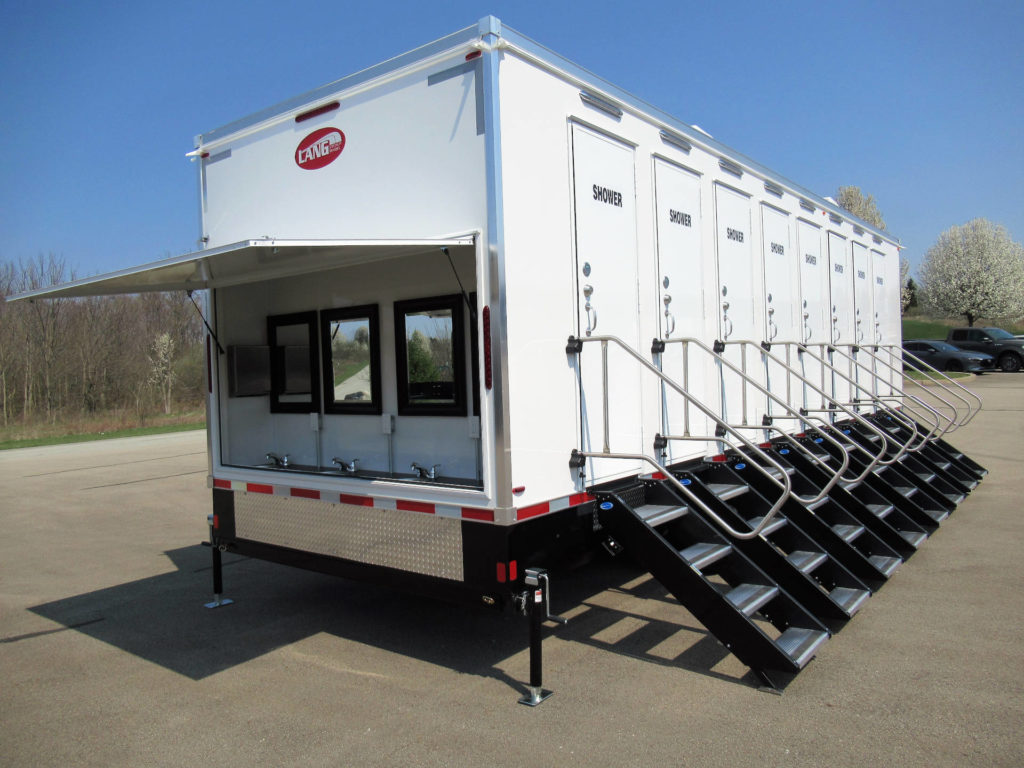Introduction
San Francisco, known for its vibrant culture, iconic landmarks, and diverse events, attracts a multitude of people to various venues. As event organizers plan gatherings ranging from music festivals to corporate conferences, one crucial aspect they must consider is restroom facilities. Restroom trailers offer a convenient and mobile solution, but are there any restrictions or guidelines for placing them at specific venues in San Francisco? Let’s delve into the regulations and considerations surrounding restroom trailer placement in the city.
San Francisco Venue Regulations
Permits and Approvals
Before placing restroom trailers at any venue in San Francisco, event organizers must obtain the necessary permits and approvals. The city’s regulatory framework aims to ensure public safety, sanitation, and compliance with local codes. These permits may involve coordination with the San Francisco Department of Building Inspection (DBI) and other relevant authorities.
Tip: Begin the planning process well in advance to allow sufficient time for obtaining permits and approvals.
Zoning Requirements
Zoning regulations play a crucial role in determining where restroom trailers can be placed. Different areas in San Francisco may have specific zoning designations, such as residential, commercial, or mixed-use. It’s imperative to understand the zoning requirements for a particular venue to ensure compliance.
Note: Zoning regulations may vary, so it’s essential to check with the local zoning department for specific guidelines related to the intended event location.
Venue-Specific Considerations
Parks and Recreational Areas
San Francisco boasts numerous parks and recreational spaces that often host events. When considering restroom trailer placement in these areas, event organizers must work closely with the San Francisco Recreation and Park Department. They may have guidelines on the placement of facilities to minimize environmental impact and ensure a positive experience for park visitors.
Environmental Impact: Consideration should be given to environmentally friendly practices, such as waste disposal and minimizing disruption to local flora and fauna.
Public Streets and Sidewalks
Events held on public streets or sidewalks may require additional considerations. The San Francisco Municipal Transportation Agency (SFMTA) and the Department of Public Works (DPW) may regulate the use of public spaces. Obtaining permits for street closures and sidewalk usage is crucial, and restroom trailer placement must adhere to these permits.
Safety Measures: Ensure that restroom trailers are placed in a manner that doesn’t compromise pedestrian or vehicular safety.
Health and Safety Guidelines
Accessibility
Restroom trailers must comply with the Americans with Disabilities Act (ADA) guidelines to ensure accessibility for individuals with disabilities. This includes features such as ramps, wider entryways, and accessible facilities within the trailers.
Compliance Check: Regularly inspect restroom trailers to ensure continued ADA compliance and address any issues promptly.
Sanitation Standards
Maintaining high levels of sanitation is paramount. Restroom trailers should be equipped with proper waste disposal facilities, handwashing stations, and regular cleaning schedules. Compliance with San Francisco’s health codes and regulations is essential for the well-being of event attendees.
Tip: Work with reputable restroom trailer providers who prioritize sanitation and adhere to industry standards.
Logistics and Practical Considerations
Space Planning
When placing restroom trailers, consider the overall layout of the event venue. Strategic placement ensures easy access for attendees while minimizing interference with other event elements. Coordination with event planners and venue managers is crucial to optimize space and maintain a seamless flow.
Efficient Layout: Plan the placement of restroom trailers in a way that minimizes queues and congestion.
Power and Water Requirements
Restroom trailers typically require access to power and water sources. Event organizers should coordinate with venue managers to ensure that adequate infrastructure is in place to support restroom facilities. Generators and water supply connections may need to be arranged to meet the trailers’ operational needs.
Logistical Planning: Consider the logistical aspects of power and water supply to avoid any disruptions during the event.
Conclusion
In conclusion, placing restroom trailers at specific venues in San Francisco involves navigating a complex web of regulations and considerations. From obtaining permits to adhering to zoning requirements and ensuring accessibility, event organizers must carefully plan restroom facilities to create a positive experience for attendees. Collaborating with local authorities, venue managers, and reputable restroom trailer providers is key to successfully navigating these guidelines and creating successful events in the City by the Bay.

